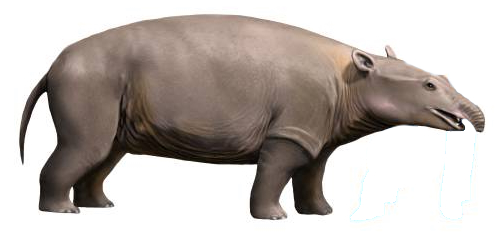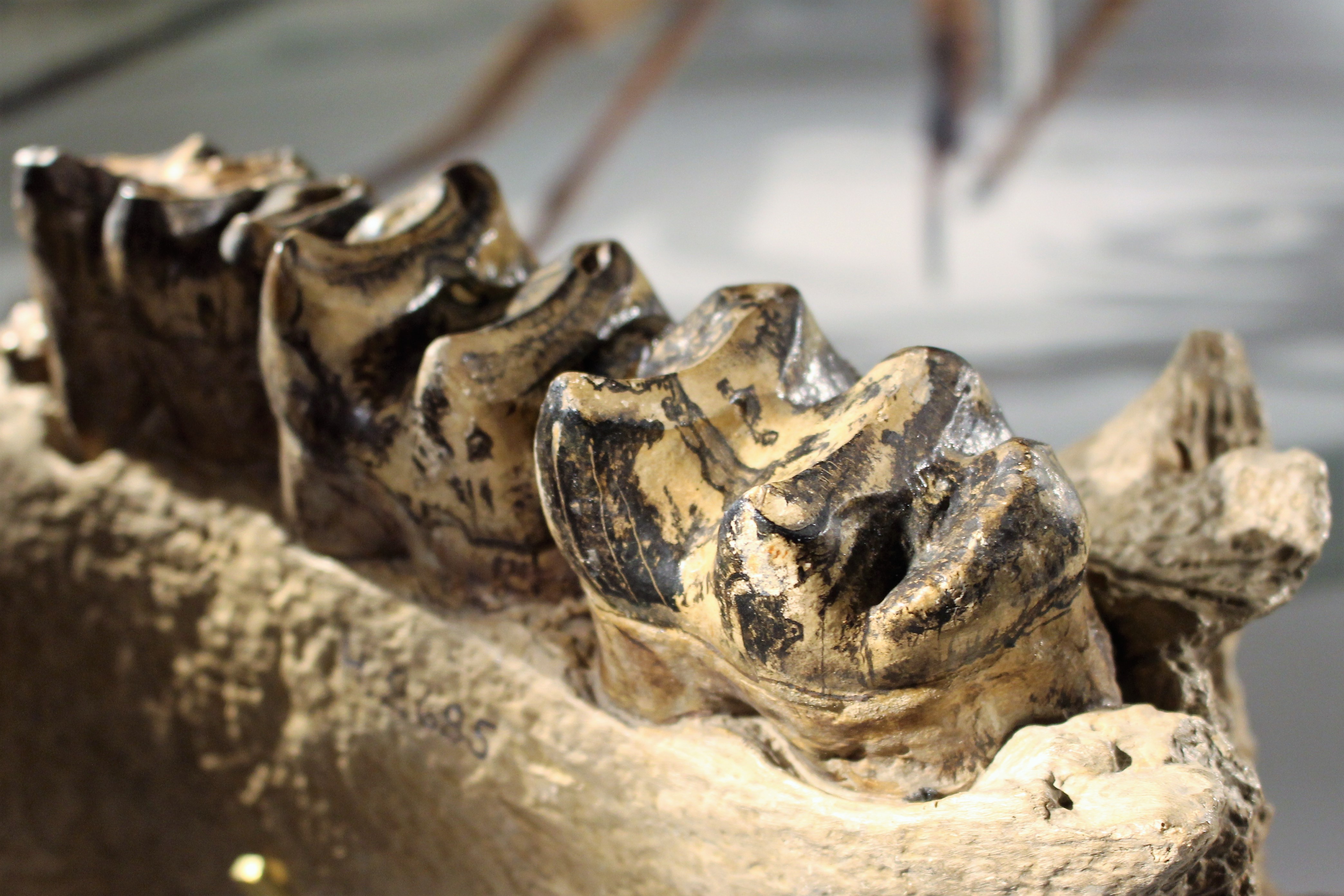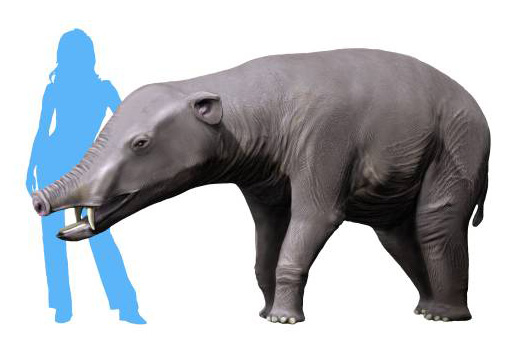|
Omanitherium
''Omanitherium'' (meaning "Oman beast" in Ancient Greek) is an extinct genus of barytheriid proboscidean that lived during the early Oligocene in Oman. It belongs to the family Barytheriidae, which represented the first large size proboscideans to appear in the fossil record and were characterized by a strong sexual dimorphism Sexual dimorphism is the condition where sexes of the same species exhibit different Morphology (biology), morphological characteristics, including characteristics not directly involved in reproduction. The condition occurs in most dioecy, di ....M. Al-Kindi, M. Pickford, Y. Al-Sinani, I. Al-Ismaili, A. Hartman and A. Heward. 2017. Large Mammals from the Rupelian of Oman – Recent Finds. Fossil Imprint 73(3-4):300-321 A cladogram of Proboscidea based on the phylogenetic analysis of Hautier et al. 2021 is below: References Plesielephantiformes Oligocene proboscideans Prehistoric placental genera Fossil taxa described in 2012 {{Paleo-a ... [...More Info...] [...Related Items...] OR: [Wikipedia] [Google] [Baidu] |
Proboscidean
Proboscidea (; , ) is a taxonomic order of afrotherian mammals containing one living family (Elephantidae) and several extinct families. First described by J. Illiger in 1811, it encompasses the elephants and their close relatives. Three living species of elephant are currently recognised: the African bush elephant, the African forest elephant, and the Asian elephant. Extinct members of Proboscidea include the deinotheres, mastodons, gomphotheres and stegodonts. The family Elephantidae also contains several extinct groups, including mammoths and ''Palaeoloxodon''. Proboscideans include some of the largest known land mammals, with the elephant '' Palaeoloxodon namadicus'' and mastodon ''"Mammut" borsoni'' suggested to have body masses surpassing , rivalling or exceeding paraceratheres (the otherwise largest known land mammals) in size. The largest extant proboscidean is the African bush elephant, with a world record of size of at the shoulder and . In addition to their eno ... [...More Info...] [...Related Items...] OR: [Wikipedia] [Google] [Baidu] |
Proboscidea
Proboscidea (; , ) is a taxonomic order of afrotherian mammals containing one living family (Elephantidae) and several extinct families. First described by J. Illiger in 1811, it encompasses the elephants and their close relatives. Three living species of elephant are currently recognised: the African bush elephant, the African forest elephant, and the Asian elephant. Extinct members of Proboscidea include the deinotheres, mastodons, gomphotheres and stegodonts. The family Elephantidae also contains several extinct groups, including mammoths and '' Palaeoloxodon''. Proboscideans include some of the largest known land mammals, with the elephant '' Palaeoloxodon namadicus'' and mastodon ''"Mammut" borsoni'' suggested to have body masses surpassing , rivalling or exceeding paraceratheres (the otherwise largest known land mammals) in size. The largest extant proboscidean is the African bush elephant, with a world record of size of at the shoulder and . In addition to thei ... [...More Info...] [...Related Items...] OR: [Wikipedia] [Google] [Baidu] |
Saloumia
''Saloumia'' is an extinct genus of the order Proboscidea. It is one of the oldest members of the order and lived in the middle Eocene of Senegal. It is known only from a single molar, whose pronounced bumpy chewing surface indicates it is probably closely related to ''Moeritherium''. Description The genus is known only from a partial upper molar 10.7 mm long and 12.3 mm wide, missing the posterior section. The molar is smaller than those of ''Moeritherium'', but larger than those of '' Eritherium'' and ''Phosphatherium''. The tooth was low-crowned, more clearly than that of ''Moeritherium''. The masticatory surface had four cusps. However, their tips were apparently broken off before fossilization. The four cusps each formed two pairs, which were arranged perpendicular to the longitudinal axis of the tooth, giving it a bilophodont structure characteristic of early proboscideans. The front pair of cusps (the paracone and the protocone) had no additional ridges. The bas ... [...More Info...] [...Related Items...] OR: [Wikipedia] [Google] [Baidu] |
Arcanotherium
''Arcanotherium'' is an extinct genus of early proboscidean belonging to the family Numidotheriidae that lived in North Africa during the late Eocene/early Oligocene interval. Taxonomy ''Arcanotherium'' was originally described by Court (1995) as a new species of '' Numidotherium'', ''N. savagei'', based on a mandible found in the late 1960s in late Eocene deposits at Dor el Talha, Libya Libya, officially the State of Libya, is a country in the Maghreb region of North Africa. It borders the Mediterranean Sea to the north, Egypt to Egypt–Libya border, the east, Sudan to Libya–Sudan border, the southeast, Chad to Chad–L .... However, after the ''Barytherium'' material from Libya became accessible to paleontologists, undescribed material from the collection prompted Delmer (2009) to erect ''Arcanotherium'' for ''N. savagei''. Phylogeny Below is a phylogenetic tree of early Proboscidea, based on the work of Hautier ''et al''. (2021). References Numidotheriid ... [...More Info...] [...Related Items...] OR: [Wikipedia] [Google] [Baidu] |
Dagbatitherium
''Dagbatitherium'' is an extinct genus of proboscideans. So far a single molar from the phosphate basins of Togo in West Africa has been found. The fossil dates to the Middle Eocene, around 47 million years ago. A striking feature of the tooth are the three pairs of cusps oriented transversely to the longitudinal axis of the tooth. This feature is found in more derived proboscideans, which are grouped in the Elephantiformes. For its age, ''Dagbatitherium'' is the earliest elephantiform to date. Furthermore, it is characterized by a low tooth crown and a humped occlusal pattern. The genus was described in 2021. Discovery and naming The only tooth of ''Dagbatitherium'' found so far is from West Africa and was recovered in the Hahotoé-Kpogamé phosphate complex. These are phosphate-bearing deposits formed in a coastal basin. They extend over a length of 30 to 35 km and a width of 2 to 3 km in a northeast-southwest direction between the towns of Dagbati and Aveta in Togo. First exp ... [...More Info...] [...Related Items...] OR: [Wikipedia] [Google] [Baidu] |
Elephantiformes
Elephantiformes is a suborder within the order Proboscidea. Members of this group are primitively characterised by the possession of upper tusks, an elongated mandibular symphysis (the frontmost part of the lower jaw) and lower tusks, and the retraction of the facial region of the skull indicative of the development of a trunk. The earliest known member of the group, '' Dagbatitherium'' is known from the Eocene (Lutetian) of Togo, which is only known from isolated teeth, while other primitive elephantiforms like '' Phiomia'' and '' Palaeomastodon'' are known from the Early Oligocene onwards. ''Phiomia'' and ''Palaeomastodon'' are often collectively referred to as "palaeomastodonts" and assigned to the family Palaeomastodontidae. Most diversity of the group is placed in the subclade Elephantimorpha, which includes mastodons (family Mammutidae), as well as modern elephants and gomphotheres (Elephantida), which are distinguished from more primitive elephantiforms by the development ... [...More Info...] [...Related Items...] OR: [Wikipedia] [Google] [Baidu] |
Deinotheriidae
Deinotheriidae ("terrible beasts") is a family of prehistoric elephant-like proboscideans that lived during the Cenozoic era, first appearing in Africa during the Oligocene then spreading across Europe and the lower latitudes of Asia during the Miocene epoch. Their most distinctive features were their lack of upper tusks and downward-curving tusks on the lower jaw. Deinotheres were not very diverse; the only three known genera are '' Chilgatherium'', ''Prodeinotherium'', and ''Deinotherium''. These form an evolutionary succession, with each new genus replacing the preceding one. Deinotheres were relatively conservative and showed little morphological change over their evolution, aside from a progressive increase in body size. Some species of ''Deinotherium'' are among the largest known land mammals ever, considerably exceeding modern elephants in size. The last members of ''Deinotherium'' persisted until the end of the Early Pleistocene in Africa, around 1 million years ago. De ... [...More Info...] [...Related Items...] OR: [Wikipedia] [Google] [Baidu] |
Moeritherium
''Moeritherium'' ("the beast from Lake Moeris") is an extinct genus of basal proboscideans from the Eocene of North and West Africa. The first specimen was discovered in strata from the Fayum fossil deposits of Egypt. It was named in 1901 by Charles William Andrews, who suggested that it was an early proboscidean, perhaps ancestral to mastodons, although subsequent workers considered it everything from a relative of manatees to a close relative of both clades' common ancestor. Currently, ''Moeritherium'' is seen as a proboscidean that, while fairly basal, predates the split between elephantiforms and deinotheres. Seven species have been named, though only three (''M. lyonsi'', ''M. gracile'', and ''M. chehbeurameuri''), are currently considered valid. ''Moeritherium'' is unusual even among basal proboscidean standards. Like many later members of the group, it had two sets of tusks: the ones on the upper jaw pointed downwards, while those of the mandible (lower jaw) were fla ... [...More Info...] [...Related Items...] OR: [Wikipedia] [Google] [Baidu] |
Numidotherium , has been reassigned to its own genus, '' Arcanotherium''.''Numidotherium'' (meaning "Numidia beast" in Ancient Greek) is an extinct genus of early proboscideans, discovered in 1984, that lived during the middle Eocene of North Africa some 46 million years ago. It was about tall at the shoulder and weighed about . The type species, ''N. koholense'', is known from an almost complete skeleton from the site of El Kohol, southern Algeria, dating from the early/middle Eocene period. The animal had the size and the appearance of a modern tapir. In appearance, it was more slender and more plantigrade than an elephant, its closest modern relative.Libya [...More Info...] [...Related Items...] OR: [Wikipedia] [Google] [Baidu] |
Barytherium
''Barytherium'' (meaning "heavy beast") is a genus of an extinct genus of large primitive proboscideans that lived during the late Eocene and early Oligocene in North Africa. The type species is ''Barytherium grave'', found at the beginning of the 20th century in Fayum, Egypt. Since then, more complete specimens have been found at Dor el Talha, Libya. More fossils were also discovered in 2011 in the Aidum area in Dhofar by Oman's Ministry of Heritage and Culture, which was named ''Barytherium omansi''. Description The barytheriids were the first large proboscideans to appear in the fossil records. ''Barytherium'' itself stood about 1.8–2.0 m tall at the shoulder and weighed around 2 tonnes. ''Barytherium'' spp. had eight very short tusks, four each in the upper and lower jaws, which resembled those of a modern hippopotamus more than those of an elephant. The upper pairs were vertical, while the lower pairs projected forwards from the mouth horizontally. Together, these woul ... [...More Info...] [...Related Items...] OR: [Wikipedia] [Google] [Baidu] |
Phiomia
''Phiomia'' (after the Ancient Greek ''phiom'' "lake", an ancient name for the Fayum), is an extinct genus of basal elephantiform proboscidean that lived in what is now Northern Africa during the Late Eocene to Early Oligocene some 37–30 million years ago. The type specimen of ''Phiomia'', part of the mandible (lower jaw), was described in 1902 by Charles William Andrews and Hugh John Llewellyn. Unsure of its identity, they assigned it, tentatively, to the obsolete order Creodonta. Subsequently, it was recognised as a proboscidean. Briefly it was treated as a junior synonym of ''Palaeomastodon'', but the two are regarded as separate genera. Though five species have been assigned to ''Phiomia'' over the years, only two, ''P. serridens'' (the type species) and ''P. major'', are currently recognised. ''Phiomia'' was fairly small in terms of body size, with an estimated shoulder height in the case of ''P. serridens''. In some regards it resembled ''Palaeomastodon'', though was les ... [...More Info...] [...Related Items...] OR: [Wikipedia] [Google] [Baidu] |
Daouitherium
''Daouitherium'' ("Sidi Daoui beast" from the name of the site where it was discovered) is an extinct genus of early proboscideans (a group including modern elephants and their extinct relatives) that lived during the early Eocene (Ypresian stage) some 55 million years ago in North Africa. Remains of this animal, fragments of jaws and teeth, have been found in the Ouled Abdoun Basin in Morocco. It is estimated to have weighed between , making it one of the earliest large mammals known from Africa and one of the oldest known proboscideans. Another estimate gives a weight of . Description ''Daouitherium'' is known only from lower jaws and associated cheek teeth. It had lophodont and bilophodont molars, i.e. molars with large ridges. The second and third premolars had a notably large cusp called the hypoconid. Gheerbrant et al. described the teeth as similar to those of other early proboscideans '' Phosphatherium'', '' Numidotherium'', and '' Barytherium''. Taxonomy A cl ... [...More Info...] [...Related Items...] OR: [Wikipedia] [Google] [Baidu] |





